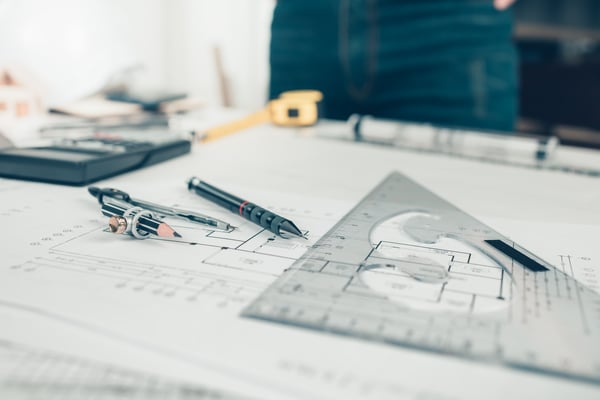A constructability review, conducted by construction professionals, helps level the playing field between project owners, contractors, etc. and saves time and money by uncovering issues that may affect construction. Benefits include reduced costs and schedule, a smoother construction process and fewer public relations and legal issues.
How a Constructability Review Works
A constructability review (CR) is an exercise used to examine a design at various stages in order to identify potential errors. It is most effective when the design is 30, 60, or 90 percent complete. The CR is used to reduce the chance of design errors and potential change orders during construction. It also ensures that the design documents are both complete and coordinated. This helps to minimize or eliminate situations that could lead to delays or additional costs.
The Stages of a Constructability Review
Constructability Reviews (CRs) are a process to ensure that all information necessary to build a project is included in the plans, and that any missing information is added. A CR involves printout drawings and an in-depth review of each design sheet and each trade discipline, as well as a site visit to identify any potential problems or concealed items. It is critical that the person performing the review is experienced in building the project. If any unanswered questions or concerns arise, the reviewer will make note of them for Stages of a Constructability Review (CR):
- Familiarize oneself with the project by reviewing drawings
- Identify the role of each trade discipline
- Review each design sheet in detail and mentally construct the components
- Determine if all necessary information is in the design to build the project successfully
- Add missing information to the list of items that need to be included in the plans by the designer
- Check if answers to raised concerns can be found in the design document
- Make a note to go back to the designer for undocumented utilities or other missing informationthe designer to address.
Definitions and Misconceptions
Anser Advisory has been providing successful project support to public utility owners for almost 40 years through their CR process. CRs are designed to reduce potential problems and change orders during a project. Owners may not initially see the value in initiating a CR, but the process will identify concealed items, incompatibility of materials, insufficient room sizes, lack of ceiling space, staging area needs and accuracy of construction drawings.
Saving Time, Money and Finger-Pointing
Constructability reviews (CRs) are an important part of capital projects, helping to avoid unforeseen costs and schedule delays. By identifying potential errors at the design phase, change orders and claims by the contractor can be avoided. A CR also helps the owner develop a phasing schedule, especially when working at a facility that is open and operating during construction. All projects benefit from a properly conducted CR, reducing the need or scope of change orders, claims and schedule delays, and aiding the relationship between all parties involved.
If you are interested in learning more about constructability reviews, you can visit Anser Advisory Booth at the CWEA annual meeting in San Diego or contact Jonathan Smith.
Meet the Author
Thomas Merritt
Executive Vice President -
Management Central / All Markets



